Short skis are a game-changer for mogul skiing. They make sharp turns easier, reduce leg strain, and help you control speed better - perfect for weaving through bumpy terrain. Whether you're new to moguls or looking to refine your technique, shorter skis like Snowfeet's models offer a smoother, more forgiving experience compared to longer skis.
Why short skis work for moguls:
- Faster turns: Navigate tight spaces with ease.
- Less effort: Easier on your legs, so you can ski longer.
- Beginner-friendly: Quicker learning curve than longer skis.
- Speed control: Manage tricky terrain without losing balance.
Get started with these tips:
- For beginners: Focus on skiing between bumps (valley line) and practice absorbing impact with your knees.
- For intermediates: Learn to ski over bumps and manage speed by turning across the fall line.
- For advanced skiers: Tackle aggressive lines, use moguls for jumps, and refine timing for smooth absorption.
Snowfeet's short ski options (15–47 inches) cater to all levels. They’re lightweight, portable, and compatible with regular winter boots - no extra gear needed. Ready to try? Check out snowfeetstore.com to find your fit!
Beginner Tips: Getting Started with Short Skis
If you're new to mogul skiing, using short skis can give you a serious head start. Snowfeet* has shown that shorter skis, ranging from 26 to 47 inches, make learning moguls much easier compared to traditional long skis. Their compact size simplifies the process, making it less intimidating for beginners.
Learning Basic Mogul Navigation
A good place to start is by mastering the valley line technique. This means skiing between the bumps instead of going straight over them. It’s a great way to build confidence and avoid the jarring impact of hitting the tops of moguls.
Short skis are perfect for this technique. Their smaller size and increased maneuverability allow you to weave through tight spaces with ease, something that's much harder to do with longer skis. Plus, they make it easier to recover if you drift off your intended path.
Start by adopting an athletic stance: keep your knees slightly bent, your weight centered, and your hands forward. Being closer to the snow with short skis helps you feel more balanced and in control. Practice gentle S-turns between small bumps, focusing on smooth weight shifts from one ski to the other. With short skis, you'll notice how quickly they respond, making it easier to correct your line as you navigate through moguls.
Once you've got the basics down, it's time to refine your technique by learning absorption skills.
Absorption Techniques for Smooth Rides
Absorption is the key to a smoother ride through moguls, and short skis make this skill much easier to pick up. Think of your knees and ankles as your shock absorbers - flex them as you encounter each bump to absorb the impact.
To practice, start on gentle terrain and work on pulling your knees toward your chest as you ski over small bumps, keeping your upper body steady. Short skis require less effort to control, which means you can focus on building your technique without wearing yourself out too quickly.
The lighter weight and responsiveness of short skis also make it easier to stay in control while practicing absorption. For speed control, try the wedge technique - point your ski tips inward and push on the edges. This classic snowplow method works particularly well with short skis because of their lightness and quick edge response.
Once you've got the hang of absorption, you're ready to tackle beginner mogul fields.
Moving from Groomed Runs to Moguls
Transitioning from groomed runs to moguls can feel like a big step, but short skis make it a lot less intimidating. Start with the easiest mogul runs, often called "baby bumps", to ease into the experience.
Using ski poles for extra support can be a big help during your first attempts. They provide added balance as you navigate the uneven terrain. Short skis, with their low center of gravity and wide base, make it easier to maintain your balance compared to traditional long skis.
If possible, practice on mogul fields when the snow is softer. Short skis handle softer conditions well, creating an ideal setup for beginners to learn. With Snowfeet* skis, you could master the basics in just a day - much faster than the weeks or months it might take with longer skis.
Focus on making quick, sharp turns instead of long, sweeping ones. Short skis shine when it comes to quick direction changes, helping you stay in control and manage your speed. Thanks to their forgiving nature and fast learning curve, you'll go from cautious first attempts to confidently navigating moguls in no time.
Intermediate Skills: Improving Your Mogul Technique
Once you've nailed the basics of mogul skiing with short skis, it's time to level up. At the intermediate stage, the focus shifts to building rhythm, precision, and confidence on trickier terrain. Short skis are your best ally here - they respond quickly and are forgiving enough to let you experiment without the fear of major wipeouts.
The big leap from beginner to intermediate mogul skiing is learning to use the bumps to your advantage. Instead of dodging them, you start working with them, making intentional line choices that keep your speed and flow in check.
From Valley Line to Bump-Top Skiing
Transitioning from skiing around the moguls to skiing over them is a game-changer. Short skis make this shift much easier compared to traditional long skis. Start small - literally. Look for smaller, rounder bumps to practice on before tackling the steep, icy monsters on expert runs.
Here’s how it works: as you approach a mogul, ski up its face, absorb the bump at the top, and extend down the backside. With short skis, everything happens faster, so your timing will need to match. The good news? Short skis forgive your mistakes, so you can mess up and still recover.
Begin at a moderate speed. Too slow, and you’ll lose momentum; too fast, and you’ll struggle to control your movements. As you approach the bump, flex your knees and ankles to prepare for the compression at the top. Short skis require less dramatic body movement, making the process feel smoother.
When you reach the peak of the mogul, the magic of short skis becomes clear. They allow you to make quick adjustments to your line and recover more easily if you’re off-center. Practice this on the same bump repeatedly until you get a feel for the timing. You’ll notice that short skis speed up your learning process - what could take weeks to master on long skis might only take a few runs here.
Managing Speed Control
Once you’ve got the hang of bump-top skiing, the next step is managing your speed. This is where short skis shine - they pivot and skid effortlessly, giving you more control over your descent.
The trick is to use the uphill face of each mogul as a natural brake. As you approach a bump, turn your skis across the fall line and let them skid against the mogul’s face to slow down. Short skis make this easier since they’re designed for quick, controlled skidding.
Instead of relying on long, sweeping turns, short skis let you make small, frequent adjustments as you go. This gives you better control and allows you to adapt to changing snow conditions or terrain.
Another handy technique? Quick hop turns. Short skis are lightweight, which makes it easier to lift them off the ground momentarily to pivot and redirect. This move is almost impossible with long skis but becomes a lifesaver with shorter ones when you need to scrub speed quickly.
Start slow and practice making clean speed checks on each bump. Gradually increase your pace as your confidence grows. The forgiving nature of short skis will help you recover if you start going a little too fast.
Learning Proper Pole Planting
Pole planting in moguls is a game of timing and balance. With short skis, it’s even more crucial because your turns happen so quickly that you need consistent rhythm cues to stay in control.
The basic idea is to plant your downhill pole at the top or just over the crest of each mogul as you start your turn. This gives you a pivot point to maintain balance while your skis handle the uneven terrain. Since short skis respond so quickly, proper pole timing becomes essential.
Start by keeping your pole plants light and consistent. You don’t need dramatic pole plants for leverage like you might with long skis. A gentle touch on each mogul crest is usually enough to guide your rhythm.
What’s great about short skis is that they’re more forgiving if your timing is off. A mistimed pole plant with long skis can throw off your entire sequence, but short skis let you recover quickly and get back into the groove.
Practice on easier mogul runs first, focusing on developing a steady rhythm. Count your pole plants - "one, two, three" - as you move through a series of bumps. This helps build muscle memory, so pole planting becomes second nature when you tackle steeper, more demanding terrain.
As you get the hang of it, you’ll find that proper pole planting, combined with the quick response of short skis, creates a smooth, almost dance-like flow through the moguls. It’s all about syncing your movements for better control and a more enjoyable ride.
Advanced Techniques: Short Ski Mogul Mastery
Taking your mogul skiing to the expert level means honing your control, timing, and style. On short skis, this becomes an art of precision and quick decision-making. Advanced mogul skiing is all about confidence - tackling aggressive lines and navigating terrain that might make others hesitate. With their quick response and agility, Snowfeet* short skis give you an edge that traditional long skis can't match.
Fall-Line Skiing and Advanced Line Choices
Expert mogul skiing isn't just about getting down the hill; it's about reading the terrain like a pro. Every bump, dip, and patch of snow becomes part of your game plan. Short skis shine here because they let you pivot mid-turn and react to features that longer skis might struggle with. Advanced line selection means using moguls as tools - whether as launch points, brakes, or pivots. With short skis, you can confidently take tighter, riskier lines that would be harder to manage on traditional skis.
For example, tight zipper lines between closely spaced bumps are much easier to handle with the quick pivoting ability of short skis. Start by identifying the rhythm of the mogul field - each run has its own flow. Expert skiers adapt to this rhythm, making small adjustments for speed and terrain. Unlike heavier, longer skis, short skis let you break the rhythm when needed, giving you more control to adjust on the fly.
In advanced skiing, you'll often mix techniques in a single run. One moment, you're smoothly flowing through the bumps, and the next, you're hopping over a tricky section or carving around a larger mogul. Short skis make these transitions feel natural, with their instant response and minimal lag. The fall-line - a steep, direct path downhill - becomes your ally. While intermediate skiers may avoid it to control speed, experts embrace it, using the natural features to manage momentum. To master this, focus on timing your absorption and extension to maintain a smooth, fluid motion.
Absorption and Extension Timing
What separates expert mogul skiers from the rest? Precision in absorption and extension. With short skis, this timing becomes even more critical. As you approach each mogul, flex your knees to "pre-load" your movements, ensuring smooth transitions. Since short skis require quicker, more frequent adjustments, you’ll need sharp muscle memory and anticipation.
Absorption isn’t just about pulling your knees up - it’s about knowing when to fully absorb or partially absorb depending on the terrain. Sometimes, you’ll want full absorption to stay grounded on uneven terrain; other times, a partial absorption sets you up for a jump or sharp directional change. The lightweight and responsive nature of short skis makes these subtle adjustments easier compared to the bulkier feel of long skis.
When linking multiple moguls at high speeds, precise extension timing is key. Short skis allow for smaller, quicker movements, helping you maintain a smooth rhythm. You can adapt your technique - absorbing every bump, skipping every other one, or mixing it up to match the terrain. This flexibility keeps your energy transfer efficient and your skiing fluid.
Mogul Jumping and Tricks
If you’re into mogul jumping and tricks, short skis are your best friend. Their lightweight design makes aerial moves much easier than on long skis. Start with natural features like moguls with steep backsides or kickers formed by heavy skier traffic. Short skis give you the confidence to approach these jumps because they’re easier to control in the air and more forgiving on landings. Plus, their reduced swing weight helps you stay balanced during spins or quick directional changes.
For advanced tricks, short skis make moves like 360s or small grabs more accessible. The lower rotational inertia means less effort to spin, and you can add style without the heavy commitment of longer skis. Experiment with switch landings or quick recoveries from minor errors - short skis make it all feel more manageable. Snowfeet* short skis, with their agility, set a new benchmark compared to traditional equipment.
The key to mogul jumping is combining commitment with control. Don’t let jumps catch you by surprise - plan your maneuvers as part of your overall strategy. After a jump, short skis allow you to transition seamlessly back into technical bump skiing.
While safety and gradual progression are always important, short skis can speed up your learning curve. Many advanced mogul skiers develop a style that blends traditional techniques with freestyle flair - a mix that’s easier to achieve with the unique capabilities of short skis.
sbb-itb-17ade95
Choosing the Right Short Skis for Moguls
Finding the right short skis can make or break your mogul skiing experience. Unlike longer skis, short skis give you the agility you need to tackle those tight, bumpy runs. Let’s break down the key features that matter most when picking your perfect pair.
Key Features to Look For
Length is a game-changer. For mogul skiing, short skis typically fall between 15 and 26 inches (38 to 65 centimeters). Shorter skis at the lower end of that range are all about agility, letting you pivot quickly between bumps. On the other hand, skis closer to 26 inches offer more stability and control, especially in uneven conditions.
Flexibility affects how your skis handle bumps. Softer flex skis are forgiving and absorb impact better, making them ideal for beginners. Medium-flex skis strike a balance, offering both responsiveness and ease of use. If you’re an advanced skier looking to carve aggressively, stiffer skis provide the precision and power transfer you’ll need.
Width influences maneuverability. Narrow skis are perfect for slicing through tight mogul lines, giving you pinpoint control. Wider skis, however, provide extra float and stability, which can be a lifesaver when moguls get icy or the snow gets chunky.
Boot compatibility makes life easier. Snowfeet* short skis are designed to work with your regular winter boots, snowboard boots, or traditional ski boots. This means you don’t need to invest in expensive ski boots or deal with rentals - just grab your favorite winter boots and hit the slopes.
Snowfeet* vs. Traditional Long Mogul Skis
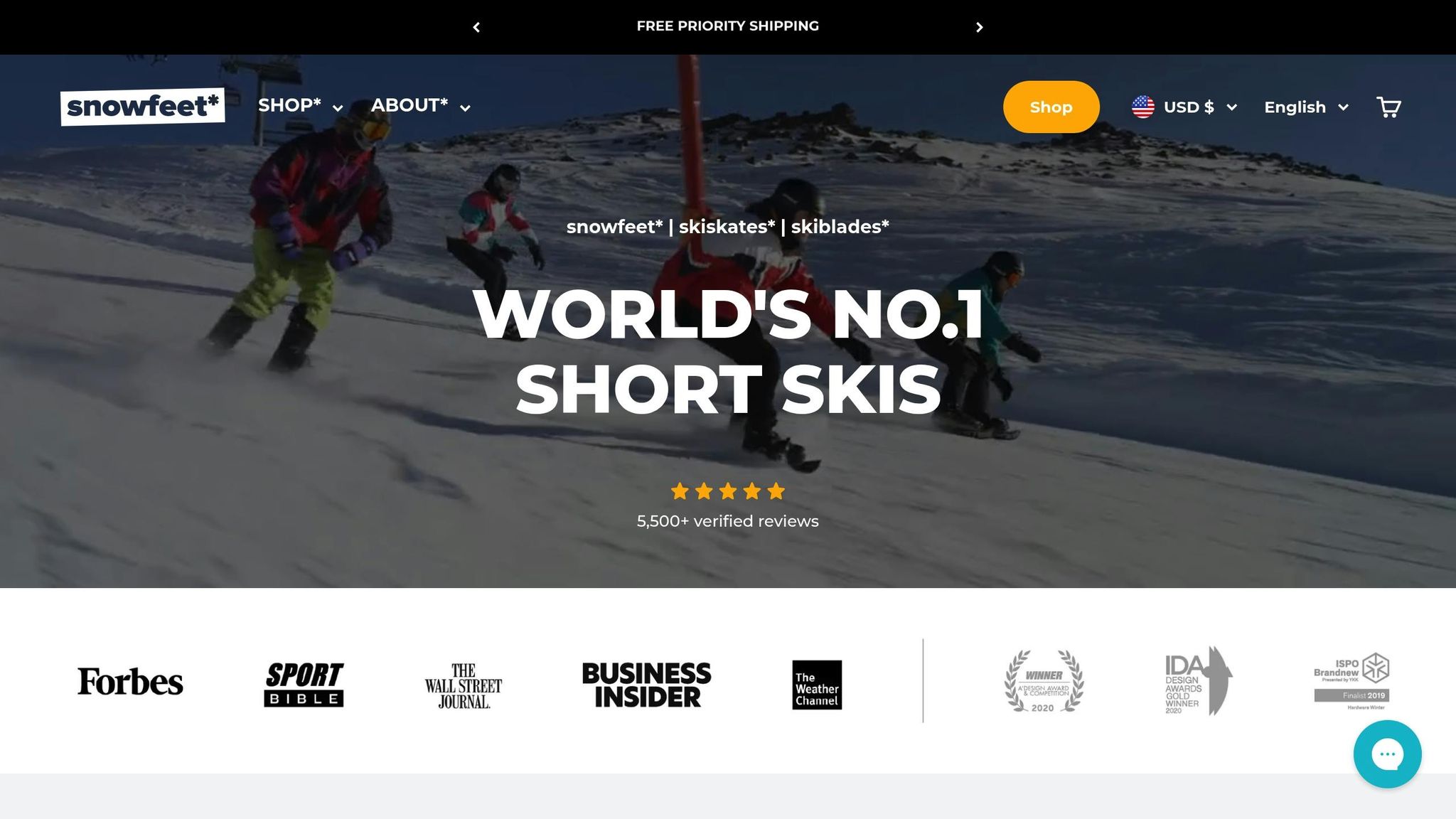
Short skis like Snowfeet* offer a completely different experience compared to traditional long mogul skis. Here’s a quick side-by-side look:
| Feature | Snowfeet* Short Skis | Traditional Long Mogul Skis |
|---|---|---|
| Maneuverability | Highly agile for fast direction changes | Requires more space and planning |
| Learning Curve | Easier to master; more forgiving | Demands precise technique and timing |
| Portability | Compact enough to fit in a backpack | Bulky and requires extra storage options |
| Boot Compatibility | Works with multiple boot types | Needs specific ski boots and bindings |
| Speed Control | Easy to manage with sharp, quick turns | Relies on longer turns and precise absorption |
| Fatigue Factor | Less tiring over extended runs | More physically demanding |
The portability of Snowfeet* short skis is a game-changer. You can easily carry them to remote mogul fields or switch between terrains without the hassle of lugging bulky equipment. Traditional long skis, on the other hand, often tie you to chairlift-accessible areas and require more planning.
Speed control is another big win for short skis. With their ability to make rapid turns, they naturally help you regulate your speed, even on steep or technical mogul runs. Long skis, however, demand perfect timing and edge control, which can be tricky to master.
Snowfeet* Product Recommendations
Here’s a quick guide to the best Snowfeet* models for different skill levels and mogul skiing styles:
- For beginners: The Snowfeet Mini Ski Skates (38 cm / 15 inches) priced at $250 are perfect for those just starting out. They’re compact, easy to maneuver, and work with your regular winter boots - no extra gear needed.
- For intermediates: The Snowfeet PRO (50 cm / 20 inches) at $275 offers more stability while still being responsive. Its adjustable bindings fit various boot types, making it a great choice as you improve your skills.
- For advanced skiers: The Skiskates (44 cm / 17 inches), starting at $575, are built for tackling tough mogul runs. With a wood-core construction, they’re designed for speed and precision on challenging terrain.
- For versatility: The Skiblades (65 cm / 26 inches) from $635 combine the agility of short skis with added stability for deeper moguls. They’re ideal for skiers who want a bit of everything.
- For powder moguls: The Snowfeet POWDER (99 cm / 39 inches) at $675 is your go-to for mogul fields covered in deep snow. These skis balance maneuverability with the extra float needed for powdery conditions.
Each of these models brings something different to the table, but they all share one thing in common: they make skiing more accessible and fun, without the hassle of traditional long skis. Plus, with their versatile boot compatibility, you can save on gear while enjoying a more flexible and exciting skiing experience.
Avoiding Common Mistakes in Mogul Skiing
Even with short and responsive skis, mogul skiing can trip up skiers of all levels. Mistakes are often tied to technique, and while shorter skis like Snowfeet* make adjustments easier compared to traditional long skis, understanding the basics is still essential.
Fixing Upper-Body Rotation and Weight Distribution
One of the most frequent issues in mogul skiing is excessive upper-body rotation. This happens when skiers twist their upper body too much while turning, throwing off their balance and making it harder to link turns smoothly. Long skis can make this even trickier, as they require more commitment and leave less room for error.
Short skis, on the other hand, are much more forgiving. To fix this, keep your upper body facing downhill and let your legs and skis handle the turning. Think of your upper body as the anchor - steady and stable - while your legs pivot independently below.
Weight distribution problems are another common challenge. Leaning too far back can cause your skis to lose grip on steep moguls, while leaning too far forward might make you lose control on the next bump. The solution? Keep your weight centered. With Snowfeet* short skis, maintaining balance is easier, thanks to their quick responsiveness. Try practicing on groomed slopes with your knees slightly bent and your hands forward to develop a centered stance.
Quick drill to improve alignment: Ski a gentle mogul run while focusing on keeping your upper body steady and tracking your weight distribution. Once that feels natural, work on syncing your timing to make the run smoother.
Improving Timing and Absorption
Once you’ve nailed balance, the next step is mastering timing. A common mistake is turning too early - right on top of the bumps - instead of in the valleys, or absorbing at the wrong moment. Long skis demand near-perfect timing, but short skis give you a bit more leeway.
The trick is to absorb on the backside of each mogul. Pull your knees toward your chest as you crest the bump, then extend as you move into the valley. This keeps your skis in contact with the snow for a smoother ride.
Think of your legs as shock absorbers. They should compress and extend while your upper body remains stable. Snowfeet* Mini Ski Skates make this process easier, as they require smaller, quicker movements compared to traditional mogul skis.
Timing drill: Start on a gentle mogul run and focus on pulling your knees up as you crest each bump. Once you’ve got that down, add the extension into the valleys. Finally, combine this absorption technique with smooth turns in the troughs between moguls.
Adjusting for Different Snow and Mogul Conditions
With your balance and timing dialed in, the next step is adapting to varying snow conditions.
Soft moguls can seem easier at first, but they come with their own set of challenges. Soft snow can grab your skis, and the bumps may be less defined. Many skiers make the mistake of using the same approach they’d use on hard-packed moguls.
In soft snow, you’ll need to commit to your turns. Short skis excel here, slicing through soft snow and maintaining grip where long skis might struggle. Be assertive and drive your skis into each turn - the soft snow will hold them.
Hard-packed and icy moguls are where short skis truly shine. On icy terrain, short skis let you make quick, precise turns. Instead of large carves, focus on shorter, controlled movements. The Snowfeet* PRO models, with their compact design, are especially responsive in these conditions, making quick adjustments easier.
Variable conditions - a mix of soft, firm, and icy terrain within the same run - can throw off your rhythm. Long skis often force you to stick to one approach, but short skis allow you to adapt on the fly. Stay light on your feet. In softer sections, be more aggressive with your turns. On harder patches, focus on precision and shorter edge changes. Short skis make these transitions smoother, as they respond quickly to changes in pressure and edge angle.
Tips for different conditions:
- In powdery moguls, let your skis float and use broader absorption movements.
- On hard-packed snow, stay centered and rely on quick, sharp edge changes.
- In mixed conditions, keep your weight slightly forward and adjust your turn shape as needed.
The beauty of short skis like Snowfeet* is how intuitive these adjustments feel. You don’t need perfect technique to enjoy mogul skiing - just focus on reading the terrain and let your skis do the rest.
Conclusion: The Freedom of Short Skis on Moguls
Short skis make mogul skiing approachable and fun for everyone. Whether you're tackling your first bump run or pushing the boundaries with daring lines and tricks, these compact skis change the game. They make mogul fields less intimidating and way more enjoyable.
Why do short skis work so well? It’s all about control. With their superior maneuverability, quick transitions, and ability to absorb bumps effortlessly, short skis keep you in charge. While traditional brands promote longer skis for stability, Snowfeet* is showing that smaller skis can bring a whole new level of excitement and versatility to winter sports.
What makes Snowfeet* special isn’t just their size - it’s their whole approach to skiing. These compact skis pair with standard winter boots, cutting out the need for pricey rentals. This design opens up mogul skiing to more people, making it easier for everyone to jump in and enjoy.
To sum it up, short skis bring agility, ease of use, and a creative edge to mogul skiing - qualities that Snowfeet* has mastered. Whether you're learning to navigate the valley line or experimenting with bold fall-line moves, short skis respond instantly, giving you the freedom to explore.
But Snowfeet* isn’t stopping there. They’re also leading the charge in skiskating, reshaping how we think about winter sports. Their dream? To see skiskating on the Olympic stage someday. It’s a bold vision, but it reflects a shift toward making winter recreation more creative and accessible.
Ready to experience the freedom of short skis? Check out snowfeetstore.com to see how compact skis can transform your mogul runs. With less fatigue and more control, you’ll glide through bump fields with ease and confidence.
FAQs
Why are short skis better for control and maneuverability in mogul skiing than traditional long skis?
Short skis are a game-changer when it comes to mogul skiing. Their compact design makes it easier to execute sharp, precise turns and glide smoothly through tight spaces like moguls or tree runs. They also require less effort to turn or stop, which is a big plus when you're dealing with uneven terrain or trying to keep control at higher speeds.
Compared to traditional long skis, which can feel clunky and tough to handle in narrow spots, short skis are much more agile and forgiving. This makes them a solid choice for skiers at any skill level who want to take on moguls with more confidence and less hassle. If you're looking for something even more portable without sacrificing performance, Snowfeet* short skis offer a unique blend of convenience and capability, proving that bigger isn’t always better.
What are the best tips for beginners to master mogul skiing with short skis?
For those just starting out, learning mogul skiing with short skis can be a lot of fun when you focus on a few basic techniques. Keep a slightly crouched stance with bent knees to help absorb the bumps, and work on making quick, controlled turns to manage your speed. Keep your upper body steady and your eyes looking ahead to pick a smooth path through the moguls.
Short skis, such as those offered by Snowfeet*, are a great choice for beginners. They’re lightweight, super easy to maneuver, and respond quickly to your movements. These qualities make handling tight turns and staying in control much easier, even on bumpy or icy slopes. With some practice and the right gear, you'll build confidence and start enjoying the excitement of mogul skiing in no time!
What’s the best way to choose the right short skis for mogul skiing based on my skill level and terrain?
Choosing the right short skis for mogul skiing comes down to your skill level and the terrain you’re planning to hit. If you’re just starting out, go for shorter skis - around 4 to 6 inches (10-15 cm) shorter than your height. These are easier to handle and make turning feel more natural. For intermediate skiers, skis that reach somewhere between your chin and head strike a good balance between stability and easy maneuvering. Advanced skiers? You might lean toward slightly longer short skis for added speed and stability, but softer, more flexible options are often the go-to for navigating moguls with precision.
Snowfeet* short skis bring something fresh to the table for skiers of all levels. Their compact build gives you more control and freedom on mogul runs, challenging the old-school idea that longer skis are always better. Whether you're learning the ropes or a seasoned skier looking to mix things up, Snowfeet* offers a fun, versatile way to conquer the bumps.







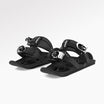






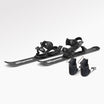






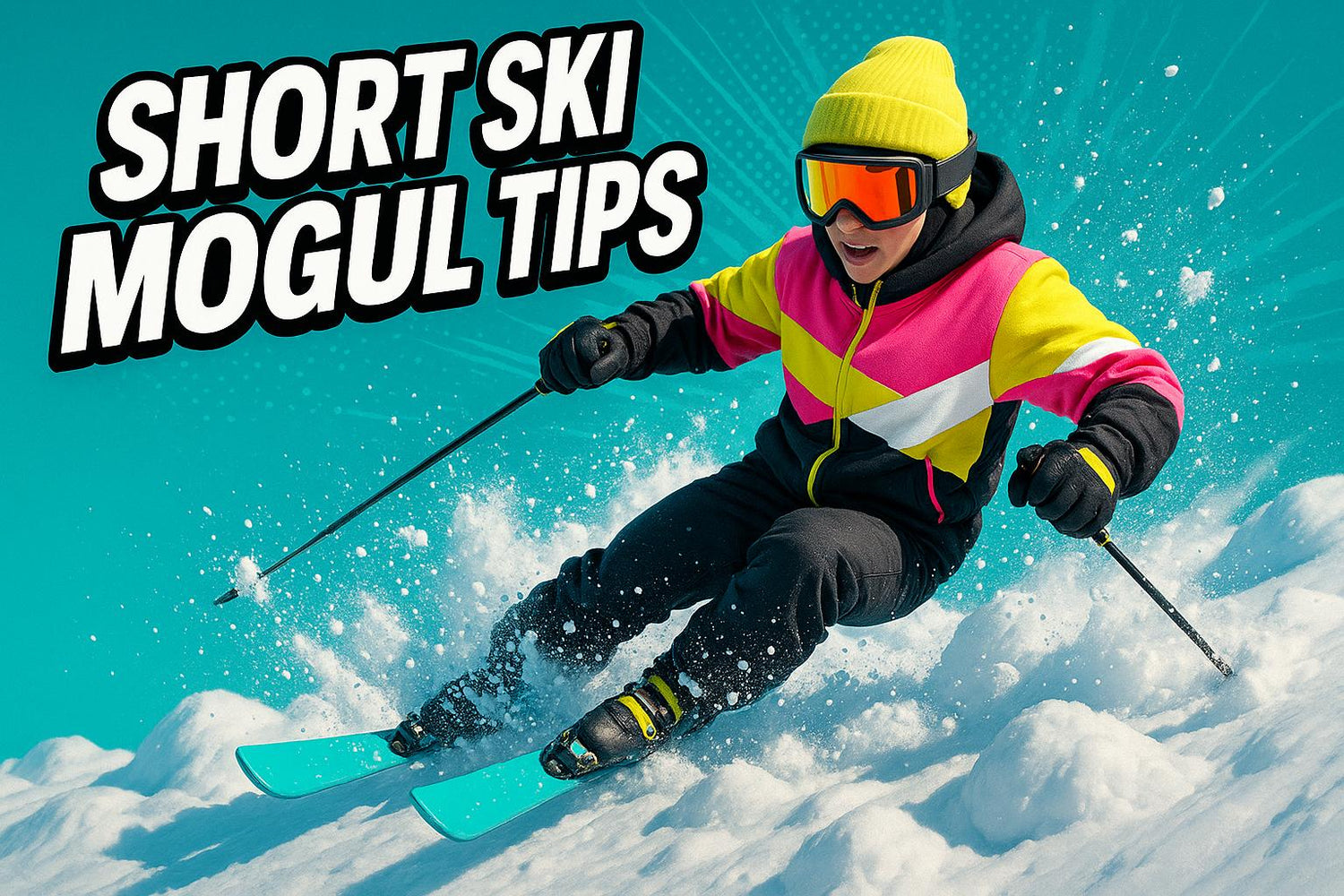
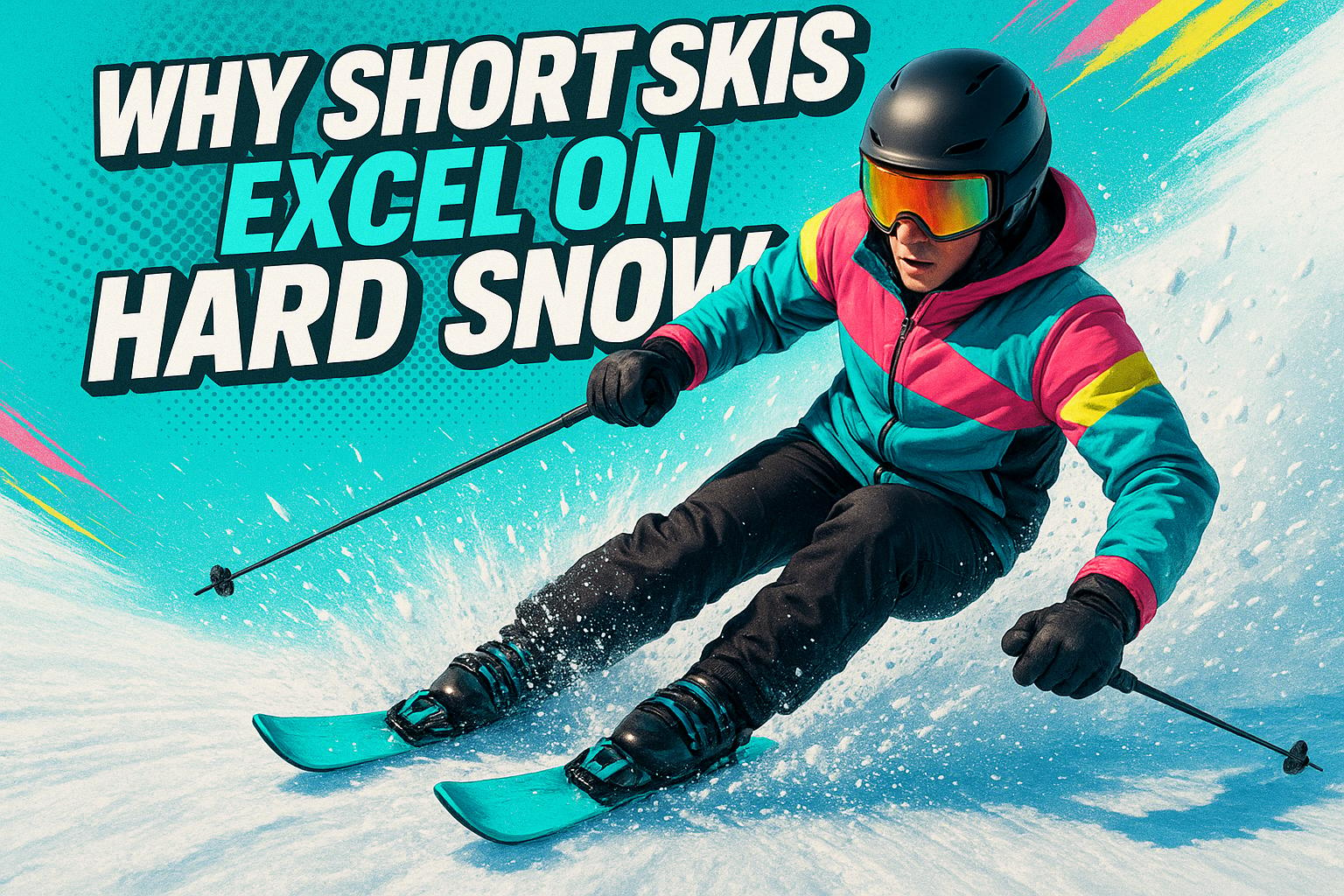
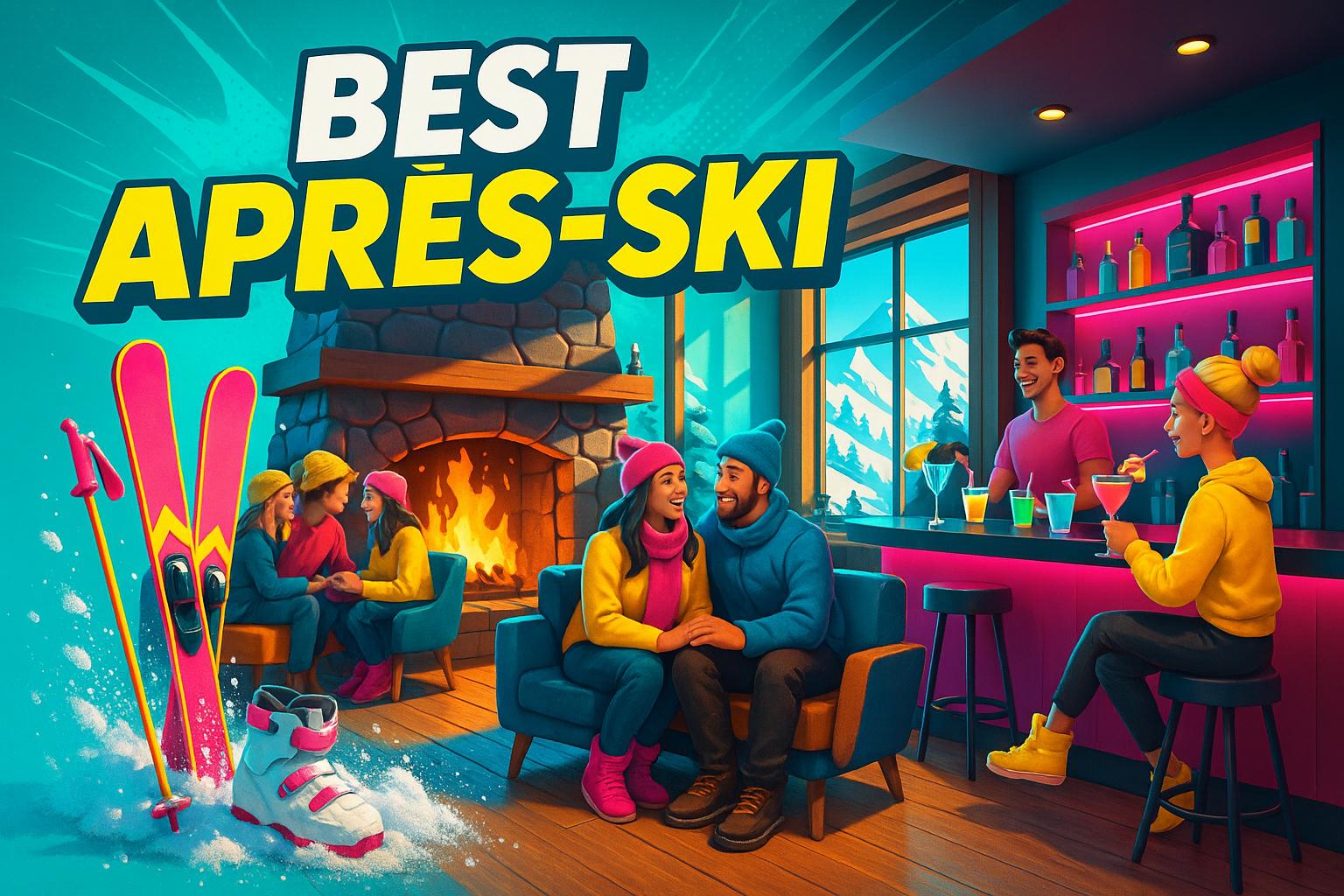

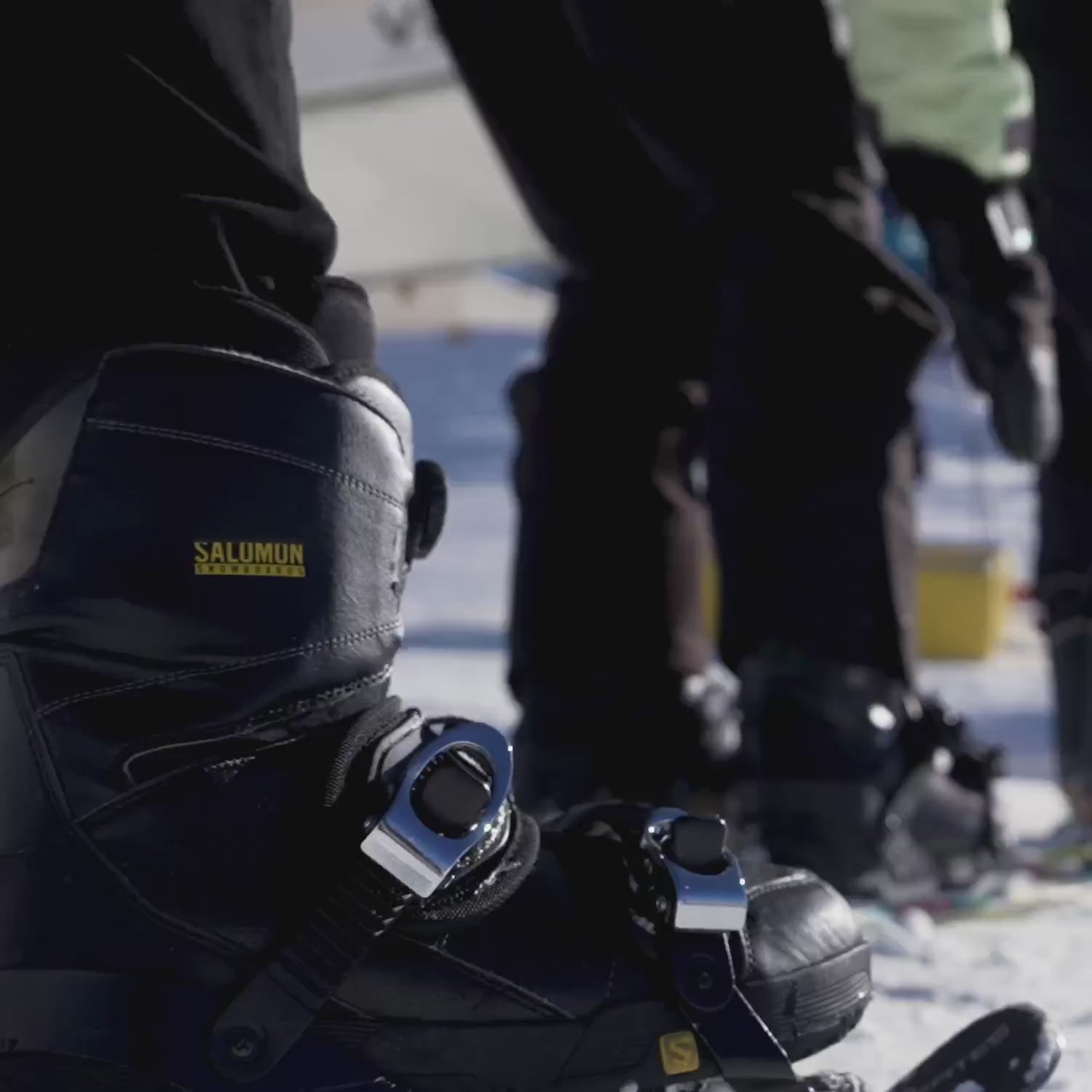


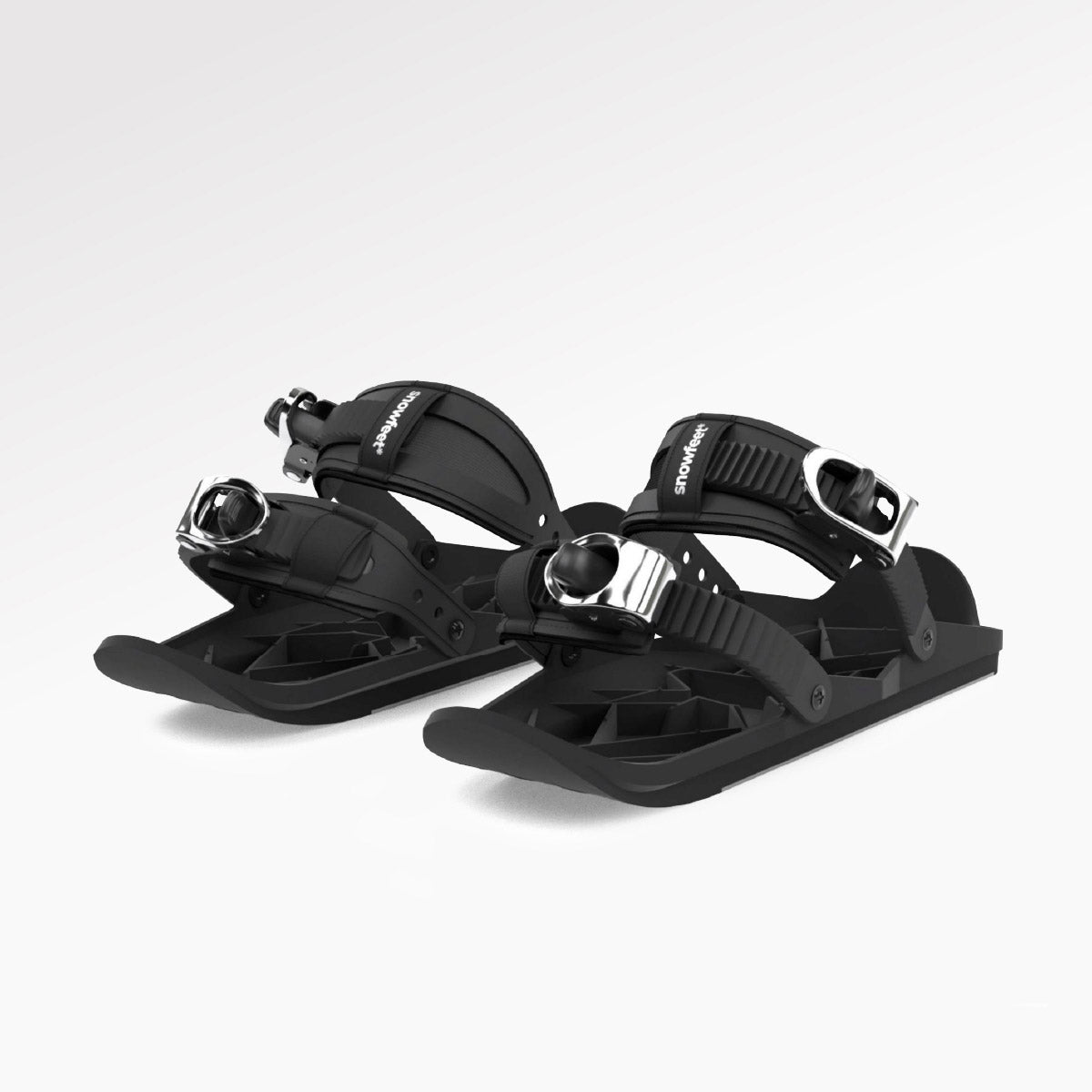
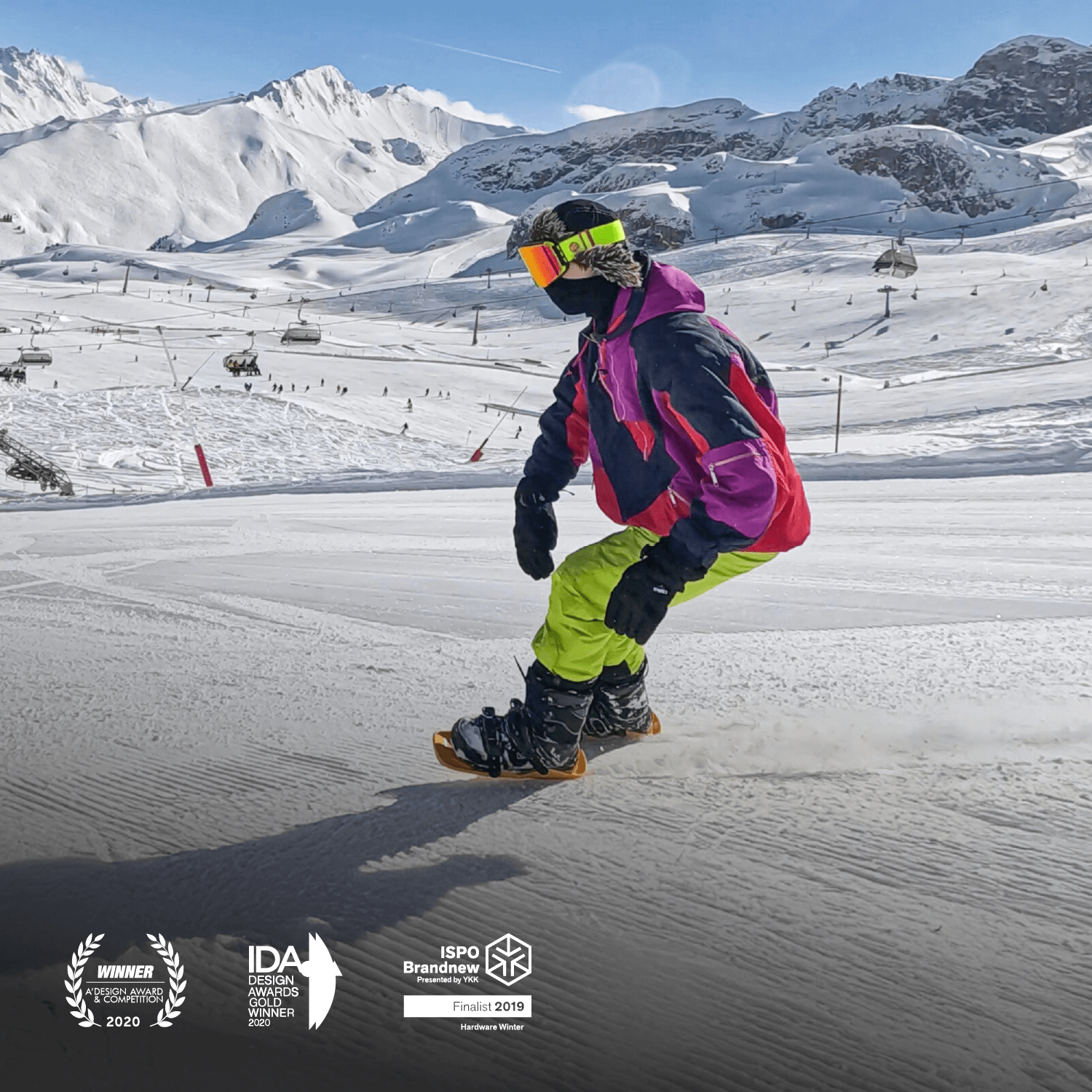

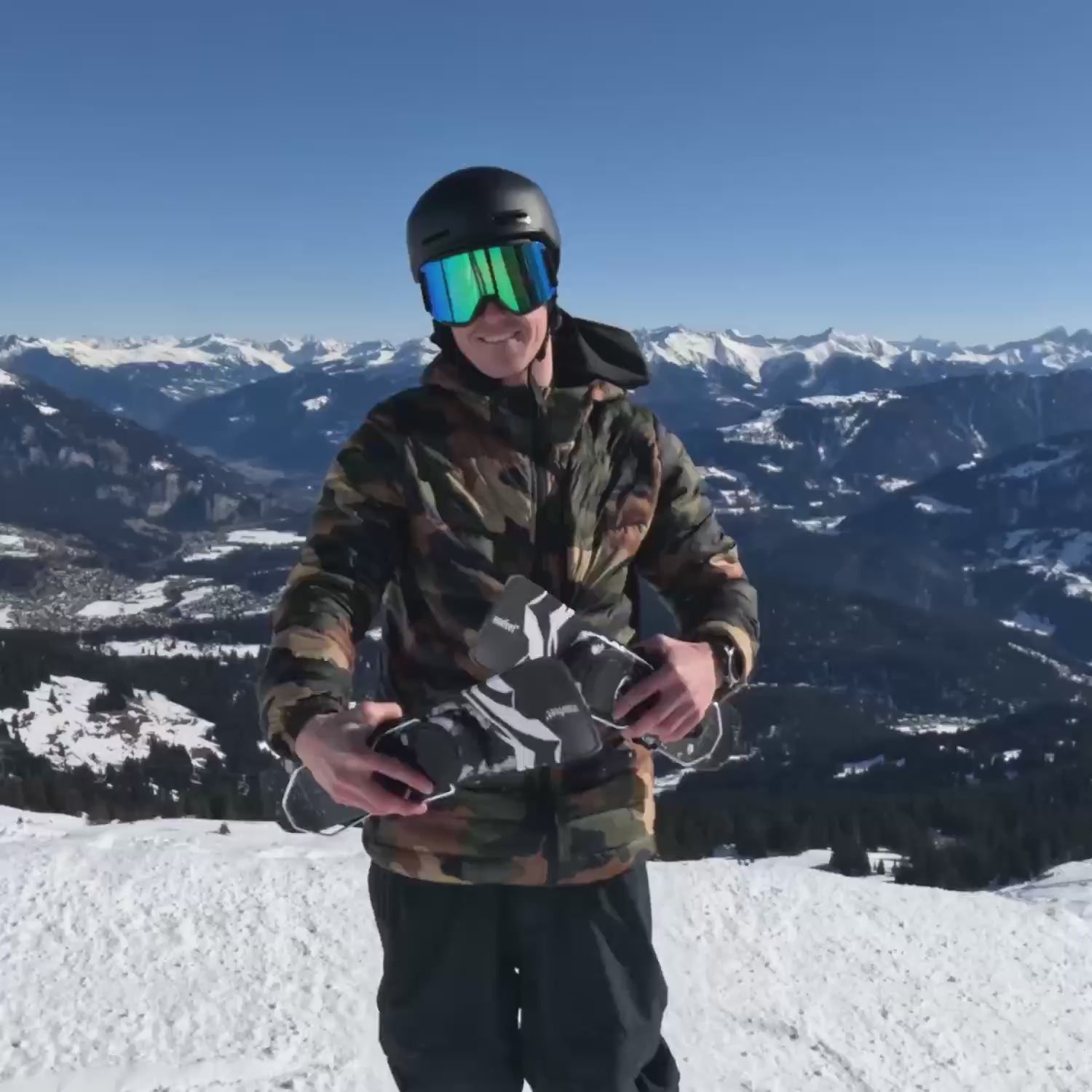

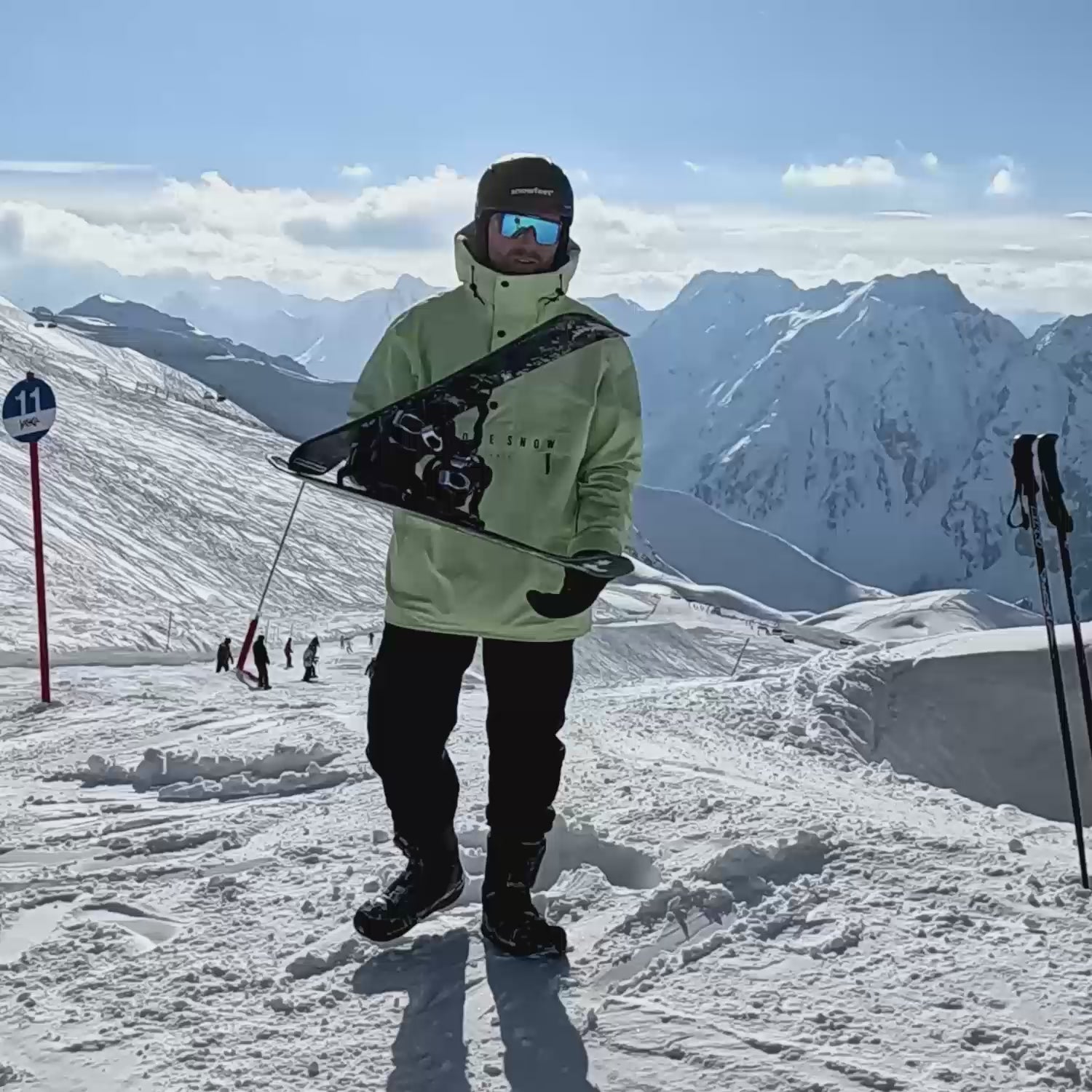
Leave a comment
This site is protected by hCaptcha and the hCaptcha Privacy Policy and Terms of Service apply.